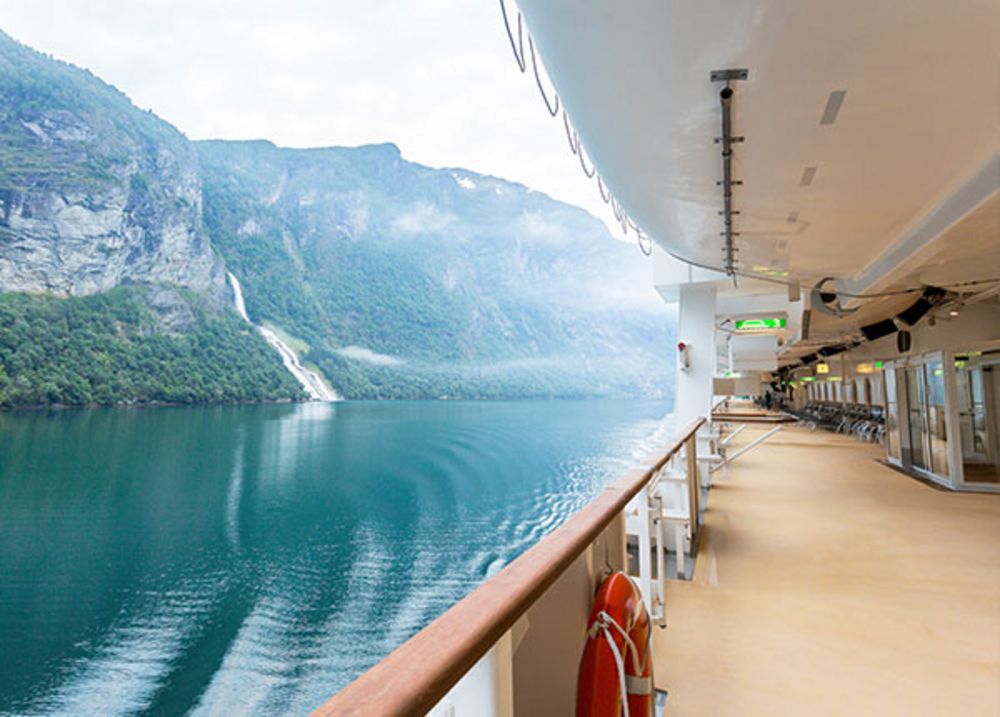Travelling in Europe: Which option to choose?

Discover the many ways to travel in Europe, whether by organized tour, train, car or a cruise. Explore the options to work out which best suits your needs, budget, and travel style.
Hosted tours: A turnkey solution
Pros | Cons |
|---|---|
Zero stress: everything is planned | Less free time |
Wide choice of packages and themes | Constant group presence |
Enriching human experience | Imposed pace |
Prefer more autonomy?
Do you appreciate having part of your trip organized but prefer to be autonomous in the itinerary? “Freedom travel” packages could be a better fit for you!
With this type of trip, some services can be booked and arranged for you (flights, accommodations, car rental, and so on). However, the itinerary and tours are done at your own pace and according to your preferences.
Ocean cruises: Relaxation and discovery
Pros | Cons |
|---|---|
Lots of inclusions: meals, lodging, transport between ports of call, and entertainment | Short stops (often a day or a few hours) |
Varied itineraries: visit several cities or countries in one trip | Public areas often crowded |
High-end comfort and service | Strict schedules |
Wide range of activities and gastronomy depending on the cruise line | Risk of seasickness |
Optimized travel (night) |
Find the best cruise itinerary in Europe. Itineraries cover several European countries:
- The Mediterranean Sea (Spain, Italy, Greece, France, Malta, Türkiye)
- The Baltic Sea (Denmark, Finland, Sweden)
- The Adriatic Sea (Italy, Croatia, Montenegro)
- Northern Europe (United Kingdom, Norwegian fjords)
River cruises: Immersion and relaxation
Pros | Cons |
|---|---|
Direct access to historic city centres | Smaller space on board |
Intimate atmosphere: ships are smaller than ocean cruises | Numerous locks and itineraries that change according to water levels |
Beautiful landscapes and architecture | Fewer activity and restaurant choices on board |
Relaxing pace | |
High-end staterooms and service | |
Local gastronomy (wide choice of restaurants in ports of call) |
Train: Fast and convenient
Pros | Cons |
|---|---|
Fast and efficient (central stations) | Possible delays |
Comfort and space on board | Limited flexibility on low-cost tickets |
Beautiful landscapes | Longer than flying for some distances |
Flexible schedules | |
Eco-friendly alternative |
Car rental in Europe: Freedom and flexibility
In Europe, renting a car allows you to fully adapt your trip according to your tastes and interests. It is perfect for exploring less frequented roads. You can visit charming villages, natural parks, or historical sites away from major European cities. You have almost complete freedom for your road trip in Europe!
Pros | Cons |
|---|---|
Total flexibility | Requires planning |
Access to remote places | Verification of necessary insurance coverage |
Cost-effective option for long stays: several packages available (including buy-back and long-term rental, both of which can be priced advantageously) | Longer journeys than other means of transport in Europe for covering large distances |
Parking is more difficult in cities and usually charged for |
Car rental and insurance in Europe
If you’re renting a vehicle in Europe, you’ll need to take out additional insurance, as your personal auto insurance won’t cover you. Here are your options: There’s no single best way to travel in Europe. There’s only the one that’s right for you. The comfort and serenity of a cruise, the speed of a train, the peace of mind of an organized tour, the freedom of sitting behind the wheel. It’s up to you to pick your dream adventure!
You must take out additional insurance:
- “Damage to rental vehicle” coverage, available with certain travel insurances.
- Rental company’s insurance, available directly from the car rental agency.
Good to know: Many countries require an International Driving Permit. Get yours at one of our CAA-Quebec Travel Centres before you leave Canada. CAA is the only Canadian authority authorized to issue and deliver the International Driving Permit.
Getting ready for a trip to Europe
Travel planning
- Choice of destinations: Consider attractions, local events, and seasons.
- Booking transport: Plane, train or bus tickets, or car rental.
- Booking accommodations: Book early, especially in high season
- Seek the advice of a travel counsellor to assist you in planning your trip to Europe.
Travel documents
- Passport and visas: Make sure your passport is valid between three and six months after your return date. Double-check visa requirements for the countries you will be visiting.
- Travel insurance: Take out travel insurance to cover medical emergencies, trip cancellations and interruptions, lost baggage, and so on.
- Copies of essential documents: Passport, visas, airline tickets, hotel reservations and other important documents. Store them separately.
- Application for ETIAS (Electronic Travel Information and Authorisation System to visit the European Union) or eTA (Electronic Travel Authorisation)
Baggage and equipment
- Baggage: Choose lightweight baggage that’s easy to carry, such as a wheeled suitcase or a sturdy backpack.
- Clothing suited to the climate: Light and comfortable.
- Essential travel accessories: Power converter and plug adapter, first-aid kit, portable umbrella, travel toiletries.
Gear up for your trip to Europe at the CAA-Quebec Boutique and earn CAA Dollars back on your purchases if you’re a member.
Looking for help with planning your next trip or taking out insurance?

Enjoy peace of mind on your travels
Discover your travel insurance options tailored to meet your needs.
Get in touch with our team
Draw on the expertise of our travel counsellors for all your projects.



